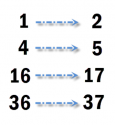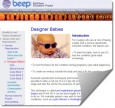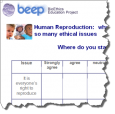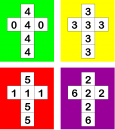Teaching approaches: Reasoning
- Active learning
- Applying and consolidating
- Argumentation
- Assessment
- Classroom management
- Collaboration
- Curriculum development
- Curriculum planning
- Dialogue
- Differentiation
- Discussion
- Drama
- Exploring and noticing structure
- Games
- Group talk
- Group work
- Higher order
- Homework
- Inclusion
- Inquiry
- Introduction
- Investigation
- Language
- Learning objectives
- Mathematical thinking
- Modelling
- Narrative
- Open ended
- Planning
- Planning for interactive pedagogy
- Planning for professional development
- Posing questions and making conjectures
- Questioning
- Reasoning
- Reasoning, justifying, convincing and proof
- Scientific method
- Sharing practice
- The ORBIT Resources
- Thinking strategically
- Visualisation
- Visualising and explaining
- Whole class
- Working systematically
While argumentation involves weighing up sides, reasoning is more general and although it can involve assessing arguments, it can also involve working through any other sort of problem including in enquiry based learning. Reasoning - and particularly higher order reasoning is valuable learning component and is related to higher order questioning, dialogue, language use, visualisation use, and so on. Teaching pupils to collaborate and reason together through group talk and dialogic teaching is an important consideration - the use of subject based language is an important element of reasoning, mathematical thinking and scientific thinking, and one that is well supported by effective group work.
Relevant resources
| Blogs | Getting a buzz out of blogging | |

|
||
| CPD | Questioning - Bloom's Taxonomy | |

|
Developing questioning through Bloom's taxonomy This resource discusses questioning(ta) and Bloom's taxonomy - which, at the higher levels, can be linked to higher order(ta) thinking skills and reasoning(ta).
| |
| CPD | Common Pitfalls in Questioning | |

|
Exploring problematic questions and ways to avoid them Questioning(ta) is a key classroom practice, and skill, and can sometimes fall into the trap of focusing on lower levels, as opposed to higher order(ta) reasoning(ta) and discussion(ta) skills. This resource covers some reasons why this - and other pitfalls - occur, with some practical advice for ensuring high quality questioning in your classroom.
| |
| CPD | Using Thinking Skills | |

|
What do you think? Exploring thinking skills for the classroom This resource highlights higher order(ta) reasoning(ta) skills and activities to prompt their use in classroom contexts.
| |
| CPD | Teaching for Metacognition | |

|
Thinking about Thinking, in the classroom context This resource describes some strategies to engage metacognitive reasoning(ta) - thinking about thinking, for example, asking pupils to think about their own learning techniques. It includes activities to assist teachers in planning(ta) for their own teaching.
| |
| Consecutive Sums | Using Prime and Square Numbers - How Old Am I? | |

|
Last year I was square, but this year I am in my prime. How old am I? This short activity offers opportunity for pupils to engage in mathematical thinking(ta) and higher order(ta) problem solving/reasoning(ta). They should be able to make links between different areas of mathematics and explore their ideas in whole class(ta) discussion(ta) and questioning(ta).
| |
| Ethics | Designer Babies | |

|
When does life actually begin? By using an informative web tutorial, this resource aims to stimulate discussion(ta) on the ethics(topic) of modern biology. A worksheet asks students where they stand and reassures them that their response might be kept private. You might also consider using a blog, chat room or other ICT tool to record the questioning(ta) and reasoning(ta) around this topic. A teaching section offers guidance on 'teaching argument' using 'Toulmin’s model of argument' and 'The IDEAS project'.
| |
| Ethics | Ethical issues in human reproduction | |

|
Why does reproduction raises so many ethical issues? When does life begin? This lesson outline stimulates A-level students to engage in discussion(ta), develop their reasoning(ta) skills and increase their awareness of the bioethical(topic) issues involved in human reproduction.
Background texts and open-ended questioning(ta) about human reproduction, contraception and IVF are provided as the stimulus. Small group discussion about these topics, writing on post-it notes, and reading case studies aim to get students reasoning(ta) to justify their opinions, and to compare and evaluate competing views. Finally, whole class(ta) discussion synthesises the emerging ideas and encourages students to consider changing their positions or adding additional issues to a recording table. | |
| Ethics | Cloning | |

|
Cloning - Potential and Issues The topic of the ethics(topic) of modern biology needs to draw on a wider range of sources than a printed book may provide. This resource uses a web tutorial interspersed with external links to news and comment. Rather than leave the students to explore too many interests, a worksheet with questions enables the teacher to focus the students on a subset of the material. You can adapt this to your particular need, for example, if you wanted students to have a discussion(ta)in small groups. You might also consider using a blog, chat room or other ICT tools to record the questioning(ta) and reasoning(ta) around this topic. The lesson-planning proforma (or draft lesson plan) includes a list of objectives that shows the scope of the material.
| |
| Force | What floats and what sinks | |

|
Is getting in the bath a way to lose weight? This activity supports a number of learning types:
| |
| Force | Building bridges from a piece of A4 paper | |

|
A bridge too far... This activity supports a number of learning types:
| |
| Force | What makes a good paper airplane? | |

|
| |
| Force | Which material makes a good parachute? | |

|
A simple investigation into parachutes and air resistance This activity supports a number of learning types:
| |
| Probability | Playing with Probability - Efron's Dice | |

|
I have some dice that are coloured green, yellow, red and purple... Efron's dice provide a discussion(ta) topic for joint reasoning(ta) - whole class(ta) or in group work(ta). Pupils can explore aspects of mathematical thinking(ta) particularly with relation to probability.
| |
| Problem Solving | Problem Solving in Primary Education | |

|
Encouraging primary pupils to think about problem-solving. Problem-solving and reasoning(ta) are important skills to learn, and engage with in teaching. This document provides some guidance and practical examples on how to use problem-solving skills in the primary curriculum.
| |
| Questioning | Questioning | |

|
Why Question? A unit exploring the use of questioning in your classroom This resource discusses questioning(ta) and its relationship to engaging reasoning(ta), active learning(ta) and discussion(ta) as well as aspects of planning(ta) such as writing learning objectives(ta).
| |
| Sampling | Sampling techniques to assess population size | |

|
| |
| Science | Primary Science Investigation | |

|
What is involved in 'doing a science investigation'? And what is there to assess? This resource describes the process of doing an investigation for inquiry(ta)-based learning. Teachers could share practice(i) and lesson planning(ta) ideas using the list of pupil skills (e.g. observing). It also lists learning goals for investigation skills (e.g. observing, predicting, problem solving) and ideas for exploring different types of practical work(ta) in science.
It could be used for discussion(ta) or brainstorming on how to apply these skills to different content areas. The resource emphasises engaging pupils in the scientific method(ta) - using higher order(ta) thinking skills, group work(ta) and dialogue(ta) to facilitate knowledge building(ta)/reasoning(ta). | |
| Shape | Getting Your Formulae in Shape | |

|
Solving a card sort for perimeter, volume and area formulae This resource provides an opportunity for some revision of shape formulae - perimeter, area, and volume. It encourages pupils to engage in effectivereasoning(ta), and group talk(ta), and could be used as an effective assessment(ta) tool. The task could be differentiated(ta), or extended for a whole class by cutting the 'formulae' lines off the bottom of each hexagon, and asking students to match these to the shapes, prior to matching the shapes to the formulae type.
| |
| Simultaneous Equations | Love Food, Hate Waste - Simultaneous Equations | |

|
Using real world data to explore simultaneous equations Using a source that was not intended by its creators as a mathematical resource, pupils are introduced to informal ways of solving simultaneous equations.
The lesson starts with an intriguing ‘hook’, pupils are able to use reasoning(ta) skills to find an answer to the problem and can then, later, formalise this in an algebraic context, using their informal work to support the transition to mathematical thinking(ta). whole class(ta) work supports this inquiry(ta) into the data provided. Using a resource not targeted at mathematics specifically encourages pupils to think about maths outside of the classroom. | |

